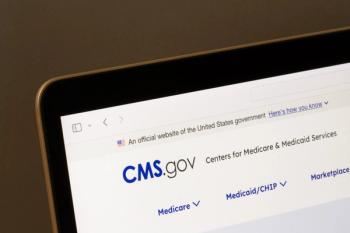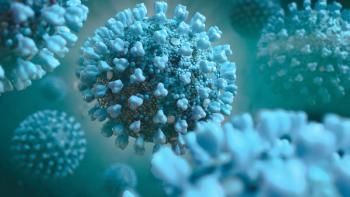
- Drug Topics May 2023
- Volume 167
- Issue 05
Novel Agents Generate Excitement for Hematologic Malignancies
During a session at the 2023 HOPA Annual Conference, Rebecca Champion, PharmD, BCOP, highlighted new therapies in the market for hematologic malignancies with a focus on bispecific antibodies and chimeric antigen receptor T-cell therapies.
Novel bispecific antibodies and chimeric antigen receptor (CAR) T-cell therapies were among the most exciting therapies to reach the market in 2022 for hematologic malignancies, specifically those for patients with multiple myeloma, large B-cell lymphomas, and acute myeloid leukemia (AML), according to a presentation by Rebecca Champion, PharmD, BCOP, from the Norton Cancer Institute at the 2023 HOPA Annual Conference.
In her talk, Champion focused on B-cell maturation antigen (BCMA)/CD3 bispecific antibodies for multiple myeloma, BCMA- and CD19-targeted CAR T-cell therapies, CD20/CD3 bispecific monoclonal antibodies, and IDH1-targeted therapies. The pace of new development has increased substantially in recent years, Champion noted, especially for CAR T-cell therapies.
"When we look at the CAR-T landscape for large cell lymphoma, we see exponential growth," said Champion.
Multiple Myeloma
There has been rapid growth in the number of agents available for multiple myeloma, with BCMA representing a relatively new target of interest. Adding to the growing agents for this marker, in October 2022, the FDA approved the BCMA and CD3 bispecific antibody teclistamab-cqyv (Tecvayli) for patients with relapsed or refractory multiple myeloma, based on findings from the phase 2 MajesTEC-1 study.
In the study, teclistamab was administered using step-up dosing to mitigate adverse events (AEs). On day 1, patients received 0.06 mg/kg of subcutaneous teclistamab followed by 0.3 mg/kg on day 3 and 1.5 mg/kg on day 5. In subsequent cycles, weekly dosing of teclistamab was administered at 1.5 mg/kg.
"It's important to note that hospitalization was required during the step-up dosing and during the first cycle of therapy," said Champion.
MajesTEC-1 enrolled 165 patients with relapsed/refractory multiple myeloma who had receive 3 or more prior lines of therapy. In data published in the New England Journal of Medicine,1 at a median follow up of 14.1 months, the overall response rate (ORR) was 63% with a median duration of response of 18.4 months. The median progression-free survival (PFS) was 11.3 months and 26.7% of patients had no signs of minimal residual disease (MRD).
In addition to other AEs, teclistamab also induced cytokine release syndrome (CRS) and neurotoxicity. Overall, CRS occurred in 72.1% of patients with a median time to onset of 2 days. Tocilizumab was utilized for 36.4% of patients to mitigate these events. Neurotoxicity was observed in 14.5% of patients, mostly grade 1 or 2 in severity.
"A majority of cellular toxicities happened in the step-up dosing, with very few after the first dose," said Champion. No patients discontinued therapy due to CRS or neurotoxicity. Additionally, she noted, teclistamab comes in two vial sizes, one at 30 mg/3 mL and the other at 153 mg/1.7 mL.
In addition to teclistamab, the BCMA-targeted CAR T-cell therapy ciltacabtagene autoleucel (cilta-cel; Carvykti) was also approved in 2022. This joined idecabtagene vicleucel (ide-cel; Abecma), which was approved in 2021. In examining the difference between the 2 therapies, Champion noted that "Ide-cel has one binding domain vs cilta-cel which has 2 binding domains."
The approval for cilta-cel was based on findings from the CARTITUDE-1 open-label phase 1b/2 study, that included patients with multiple myeloma following 3 or more prior lines of therapy. The ORR with cilta-cel was 97.9%, which included a complete response (CR) rate of 82.5%.2 The median duration of response was not yet reached, with 91.8% testing negative for MRD. Additionally, MRD negativity was sustained for 12 or more months in 55% of patients.
In addition to other AEs, safety of interest included CRS, which occurred in 94.8% of patients, with just 4.1% having a grade 3 or 4 event. There was 1 case of grade 5 CRS. For neurotoxicity, 21.6% had an AE, with 11.3% having a grade 3/4 event and 1 having a grade 5 event. Tocilizumab and/or steroids was required for 71% of patients.
B-Cell Lymphoma
Champion focused the first portion of her discussion of B-cell lymphoma advances on follicular lymphoma and included some information on a not-yet-approved agent currently in the pipeline. In December, the bispecific CD20/CD3 agent mosunetuzumab-axgb (Lunsumio) was approved for adult patients with relapsed or refractory follicular lymphoma after 2 or more lines of systemic therapy, based on findings from the GO29781 study.3
Step-up dosing was utilized in the study, starting at 1 mg intravenously on day 1 of cycle 1, then escalating to 2 mg on day 8 followed by 60 mg on day 15 and then day 1 of cycle 2 and then 30 mg every 21 days for subsequent cycles, starting with cycle 3. The ORR was 80%, with a 60% CR rate. In those with a CR, the median duration of response was 22.8 months. The median PFS was 17.9 months.
CRS occurred in 39% of patients and neurotoxicity was seen in 39% of patients. Most of these cases were low grade, with 2% of patients having grade 3/4 CRS and no patients having a grade 3/4 neurotoxicity event.
"Hospitalization was not required for these patients [as part of the trial]," Champion noted. "But it's important to note that 21 patients were hospitalized, to better manage their cellular toxicities."
Another important agent, she noted, was odronextamab, which is also a CD20/CD3 bispecific antibody. Positive findings from the ELM-2 study for this treatment were presented in December at the 2022 ASH Annual Meeting. The ELM-2 study is ongoing, and Regeneron, the developer of the antibody, plans a regulatory submission later this year. The phase 3 OLYMPIA study is exploring odronextamab is also currently under way.
In the ELM-2 study, patients with relapsed/refractory follicular lymphoma grades 1 to 3a had an ORR with odronextamab of 82% and a CR rate of 75%. The median duration of response was 20.5 months and the median PFS was 20 months. CRS occurred in 56.5% of patients but there were no cases of immune effector cell-associated neurotoxicity syndrome.
From here, Champion pivoted to large B-cell lymphoma, with an initial focus on the now-crowded CAR T cell landscape, as well as whether or not these therapies can be used in the second line.
This question was answered by 2 studies presented in 2022, she noted, the first was ZUMA-7 for axicabtagene ciloleucel (axi-cel; Yescarta)4 and the second was the PILOT study for lisocabtagene maraleucel (liso-cel; Breyanzi).5
In the ZUMA-7 study, axi-cel elicited a median event-free survival (EFS) of 8.3 months compared with 2.0 months for standard second-line therapy (HR, 0.40; 95% CI, 0.31-0.51; P <.001). The 24-month EFS rate was 41% compared with 16% for standard of care. The 2-year overall survival was 61% vs 52% and the response rates were 83% vs 50%, for axi-cel and standard of care, respectively.
"There were no new safety signals that we didn't see in previous studies of axi-cel," said Champion.
In the single-arm PILOT study, liso-cel demonstrated an ORR of 80% with a CR rate of 54%. The median duration of response was 12.1 months and the median PFS was 9.0 months. Thirty-six percent of patients had grade 1/2 CRS and 2% had a grade 3 or higher event. Neurotoxicity of grade 1/2 in severity was experienced by 26% of patients with 5% having a grade 3 or higher event.
"It's important to note that some patients in the PILOT study received treatment in an outpatient setting," Champion said.
Based on these findings, the National Comprehensive Cancer Network guidelines now list both axi-cel and liso-cel as category 1 treatments for patients with diffuse large B-cell lymphoma, when there is relapse within 12 months on frontline therapy or for patients with primary refractory disease.
Acute Myeloid Leukemia
Until recently, there was very little therapeutic development activity for patients with AML, but that changed with the introduction of targeted agents for FLT3 and IDH1. Approximately 7% to 14% of patients with AML have an IDH1 alteration. In 2019, ivosidenib (Tibsovo) was approved as a single agent for newly diagnosed patients with IDH1-mutated AML and in 2022 this indication was expanded to include combination therapy with azacitidine.
In December 2022, single-agent olutasidenib (Rezlidhia) also gained FDA approval for patients with relapsed/refractory AML with an IDH1 mutation, based on findings from the 2102-HEM-101 study.6 In this study, the CR or CR with partial hematologic recovery rate was 35%, with a median duration of 25.9 months. This agent is also being examined with azacitidine in the same study.
Both IDH1 inhibitors are approved with Boxed Warnings regarding the risk of differentiation syndrome. These events mostly occurred in the first cycle of treatment, sometimes as early as the first day, she noted, and all cases resolved with treatment interruption.
"One of the more important events we see with therapies, including IDH1 inhibitors, is differentiation syndrome," said Champion. "It's not well understood, but it's thought to be related to the larger number of maturing myeloid cells."
She recommended added patient counseling about this AE, including a description of the symptoms, which include leukocytosis, dyspnea, pulmonary, infiltrates/pleuropericardial effusion, kidney injury, fever, edema, pyrexia, and weight gain. Champion recommended dexamethasone for a minimum of 3 days after treatment interruption for differentiation syndrome, along with hemodynamic monitoring.
References
1. Hua G, Scanlan R, Straining R, Carlson DS. Teclistamab-cqyv: the first bispecific T-cell engager antibody for the treatment of patients with relapsed or refractory multiple myeloma. J Adv Pract Oncol. 2023;14(2):163-171. doi:10.6004/jadpro.2023.14.2.7
2. Abebe EC, Shiferaw MY, Admasu FT, Dejenie TA. Ciltacabtagene autoleucel: the second anti-BCMA CAR T-cell therapeutic armamentarium of relapsed or refractory multiple myeloma. Front Immunol. 2022;13:991092. doi:10.3389/fimmu.2022.991092
3. Budde LE, Sehn LH, Matasar M, et al. Safety and efficacy of mosunetuzumab, a bispecific antibody, in patients with relapsed or refractory follicular lymphoma: a single-arm, multicentre, phase 2 study. Lancet Oncol. 2022;23(8):1055-1065. doi:10.1016/S1470-2045(22)00335-7
4. Locke FL, Miklos DB, Jacobson CA, et al; all ZUMA-7 investigators and contributing Kite members. Axicabtagene ciloleucel as second-line therapy for large B-cell lymphoma. N Engl J Med. 2022;386(7):640-654. doi:10.1056/NEJMoa2116133
5. Sehgal A, Hoda D, Riedell PA, et al. Lisocabtagene maraleucel as second-line therapy in adults with relapsed or refractory large B-cell lymphoma who were not intended for haematopoietic stem cell transplantation (PILOT): an open-label, phase 2 study. Lancet Oncol. 2022;23(8):1066-1077. doi:10.1016/S1470-2045(22)00339-4
6. Watts JM, Baer MR, Yang J, et al. Olutasidenib alone or with azacitidine in IDH1-mutated acute myeloid leukaemia and myelodysplastic syndrome: phase 1 results of a phase 1/2 trial. Lancet Haematol. 2023;10(1):e46-e58. doi:10.1016/S2352-3026(22)00292-7
Articles in this issue
over 2 years ago
The Senior Citizen Vote Is Feared With Good Reasonover 2 years ago
Addressing Misconceptions, Concerns Around Biosimilar Useover 2 years ago
Pharmacists Can Take Shots at Vaccine-Preventable Diseasesover 2 years ago
Taking Care of Yourself and Othersover 2 years ago
Second Senate Committee Hearing Heaps Criticism on PBMsNewsletter
Pharmacy practice is always changing. Stay ahead of the curve with the Drug Topics newsletter and get the latest drug information, industry trends, and patient care tips.





















































































































































